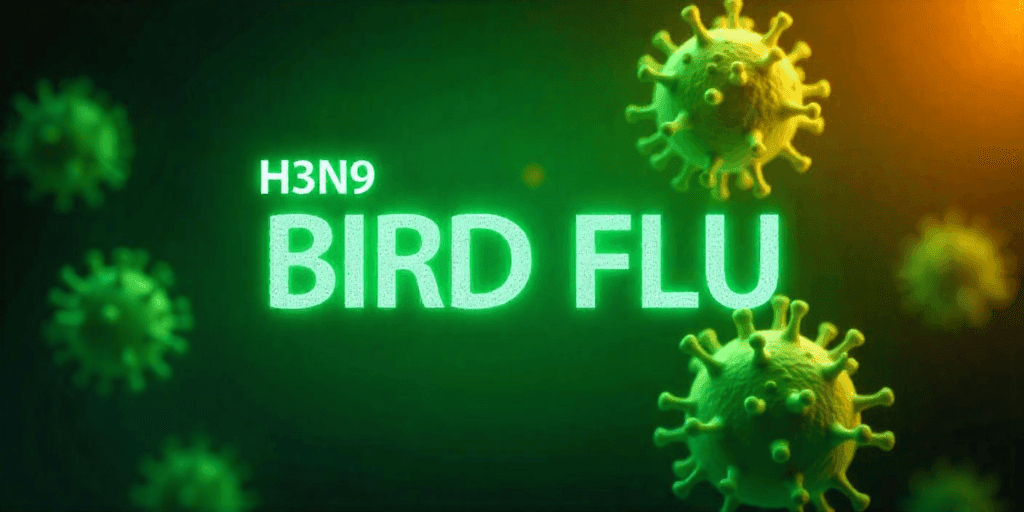Introduction: What is the H5N9 Bird Flu Outbreak?
The H5N9 bird flu outbreak has become a major concern after its first detection in U.S. poultry in late 2024. A duck farm in Merced County, California, reported the presence of the H5N9 strain, leading to the culling of nearly 119,000 birds to prevent further spread.
This outbreak has raised serious questions about the risks to poultry, agriculture, and human health. While the H5N9 strain is rare, its emergence alongside H5N1 (another highly pathogenic avian flu strain) has sparked concerns about virus mutations and future outbreaks.
In this article, we’ll cover:
✔ What H5N9 is and how it spreads
✔ Impact on poultry and agriculture
✔ Potential risks to human health
✔ Preventive measures to control the outbreak
What Is H5N9 Avian Influenza?
H5N9 is a subtype of the influenza A virus known for causing highly pathogenic avian influenza (HPAI), commonly referred to as bird flu. The virus primarily affects domestic and wild birds, but in some cases, mutations can allow it to infect humans.
How Does H5N9 Spread?
The H5N9 bird flu virus spreads through:
✔ Direct contact with infected birds (domestic or wild)
✔ Contaminated feed, water, or farm equipment
✔ Human movement between infected and non-infected farms
✔ Airborne transmission in poultry farms
Once introduced to a farm, the virus can spread rapidly, leading to high mortality rates in poultry.
Impact on Poultry and Agriculture
Mass Culling and Economic Losses
The H5N9 outbreak in California has already had severe consequences for the poultry industry.
📌 119,000 ducks were culled to prevent further spread.
📌 Rising egg and poultry prices due to supply chain disruptions.
📌 Poultry trade restrictions as a precautionary measure.
According to AP News, outbreaks like this exacerbate inflation, affecting the affordability of eggs, chicken, and other poultry products.
Comparison: H5N9 vs. H5N1
| Virus Strain | Confirmed Human Cases | Impact on Poultry | Current Status |
|---|---|---|---|
| H5N1 | Yes (sporadic human infections) | Highly fatal to birds | Active in multiple countries |
| H5N9 | No reported human cases (as of now) | Highly fatal to birds | First U.S. outbreak in 2024 |
Can H5N9 bird flu infect humans?
Potential Human Health Risks
Are humans at risk?
As of now, no human cases of H5N9 have been reported. However, Avian influenza viruses can mutate, potentially increasing the risk of human-to-human transmission.
🚨 Who is at higher risk?
✔ Poultry farmers and workers—direct exposure to infected birds.
✔ Veterinarians and animal health experts handle sick birds.
✔ Consumers in affected areas—Risk of exposure through contaminated surfaces.
Health agencies like the WHO (World Health Organization) and CDC (Centers for Disease Control and Prevention) are closely monitoring the virus for any mutations that could pose a human health risk.
Preventive Measures: How to Control the H5N9 Bird Flu Outbreak

To prevent the spread of H5N9 bird flu, government agencies and poultry farms have implemented strict monitoring and biosecurity measures.
For Poultry Farmers & Workers
✅ Strict farm biosecurity: restricting access and disinfecting equipment.
✅ Regular health checks for birds-early detection prevents outbreaks.
✅ Immediate culling of infected flocks reduces transmission risks.
✅ Surveillance of wild bird populations: Monitoring how the virus spreads.
For the General Public
✅ Avoid direct contact with sick or dead birds.
✅ Ensure poultry products are fully cooked (165°F/75°C kills the virus).
✅ Follow hygiene practices-wash hands after handling raw poultry.
✅ Stay updated with health advisories. Following USDA, WHO, and CDC updates.
Government Actions & Monitoring
The U.S. Department of Agriculture (USDA) and state health officials are taking proactive measures to control the outbreak:
✔ Increased surveillance of poultry farms
✔ Monitoring wild bird migration patterns
✔ Developing potential vaccines if human cases emerge
Is There a Vaccine for H5N9?
Currently, no vaccine is available for H5N9 in poultry or humans. However, researchers are studying the virus to develop potential vaccines if human infections occur.
Conclusion: Should You Be Concerned?
While H5N9 is not currently a direct threat to humans, its presence in poultry and potential for mutation make it a virus worth monitoring.
✔ If you work in poultry farming, follow strict safety protocols.
✔ If you’re a consumer, cook poultry products thoroughly.
✔ Stay updated on developments from health authorities like the WHO and CDC.
As this developing situation unfolds, staying informed and proactive is the best way to protect public health and the poultry industry.
FAQs About H5N9 Bird Flu
1. Is H5N9 bird flu dangerous to humans?
Currently, no human cases have been reported. However, avian influenza viruses can mutate, so experts are monitoring the situation.
2. How does H5N9 spread among birds?
H5N9 spreads through direct contact with infected birds, contaminated food and water, and farm equipment.
3. What are the symptoms of bird flu in poultry?
✔ Sudden death in flocks
✔ Swelling in the head, neck, and eyes
✔ Nasal discharge and respiratory distress
✔ Drop in egg production
4. Can I eat poultry products during an outbreak?
Yes, fully cooked poultry is safe to eat. Cooking at 165°F (75°C) kills the virus.
5. What should I do if I see a sick or dead bird?
🚨 Report it to local health authorities immediately. Avoid touching or handling the bird.
Sources & Further Reading:
📌 WHO: Avian Influenza Updates
📌 USDA: Animal Health
📌 CDC: Bird Flu Resources



